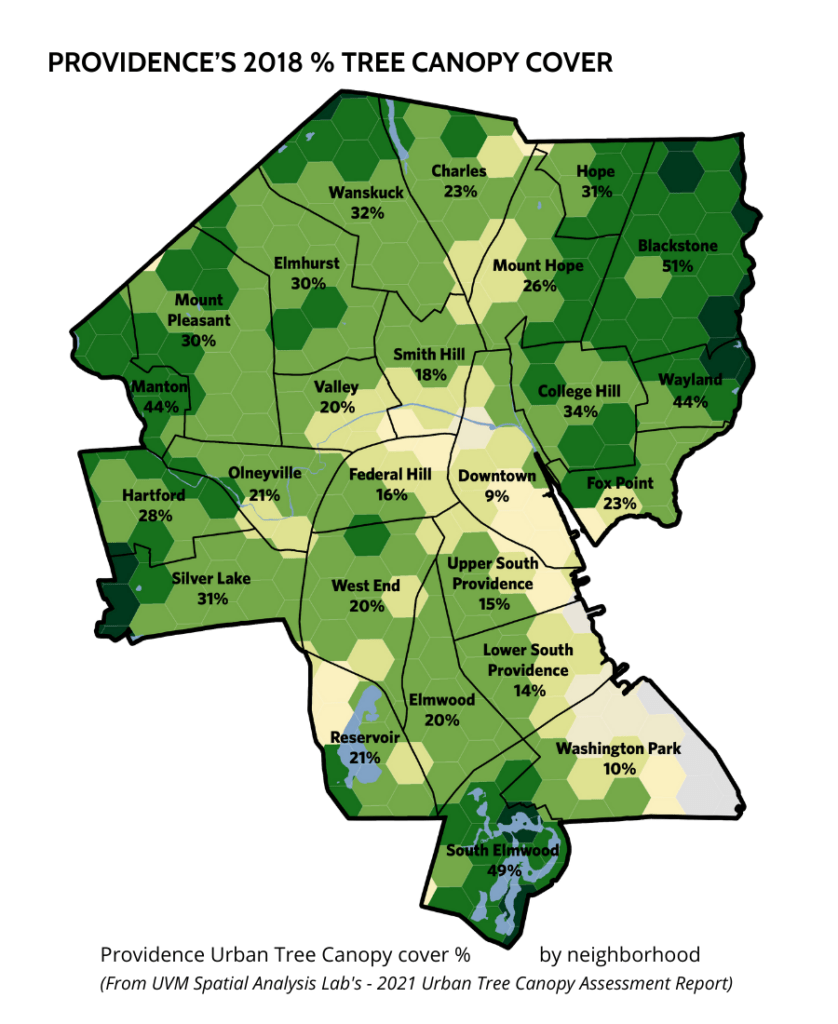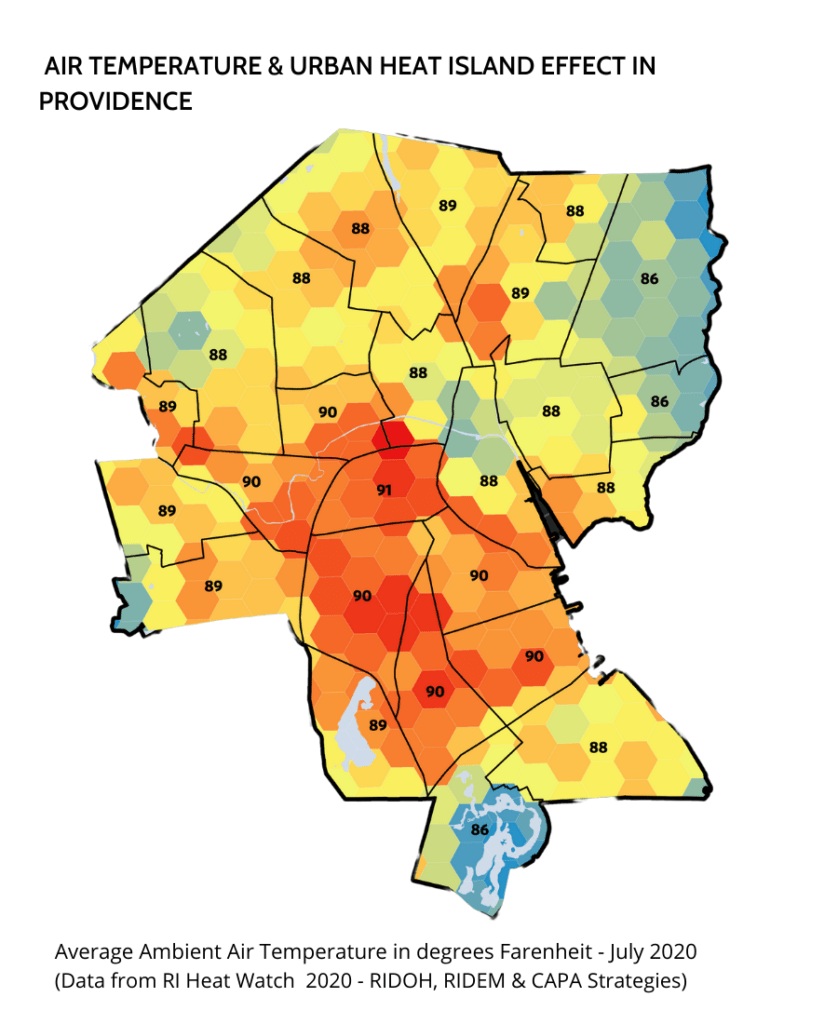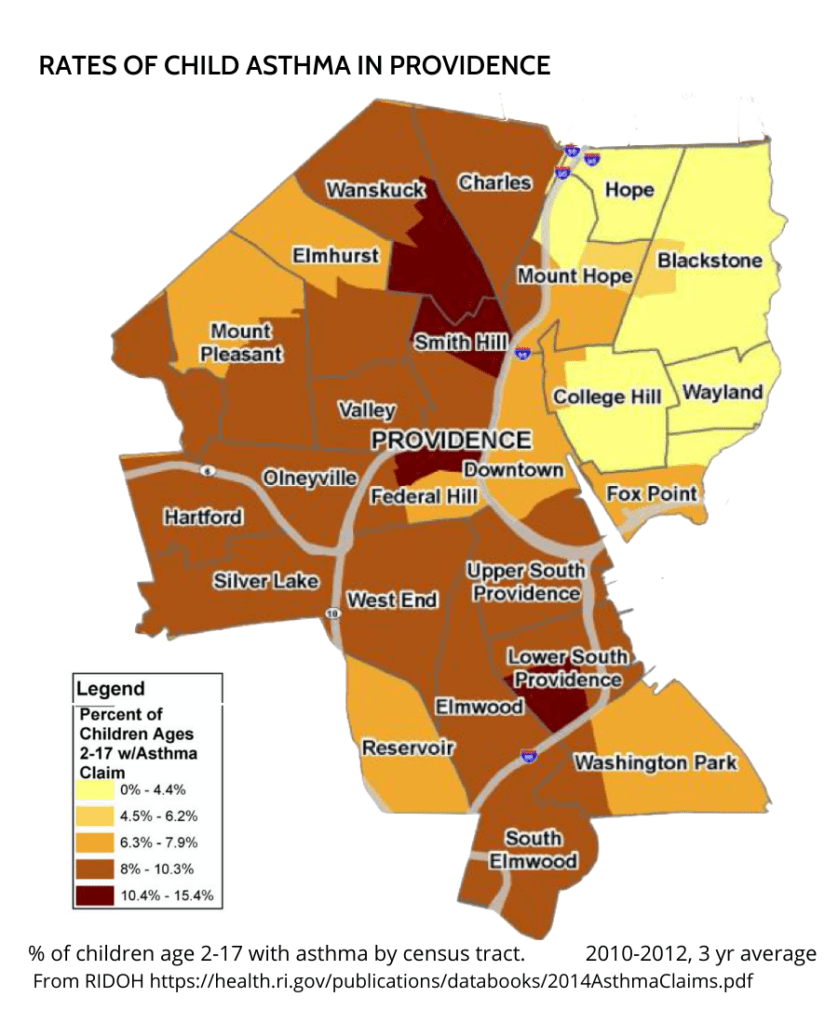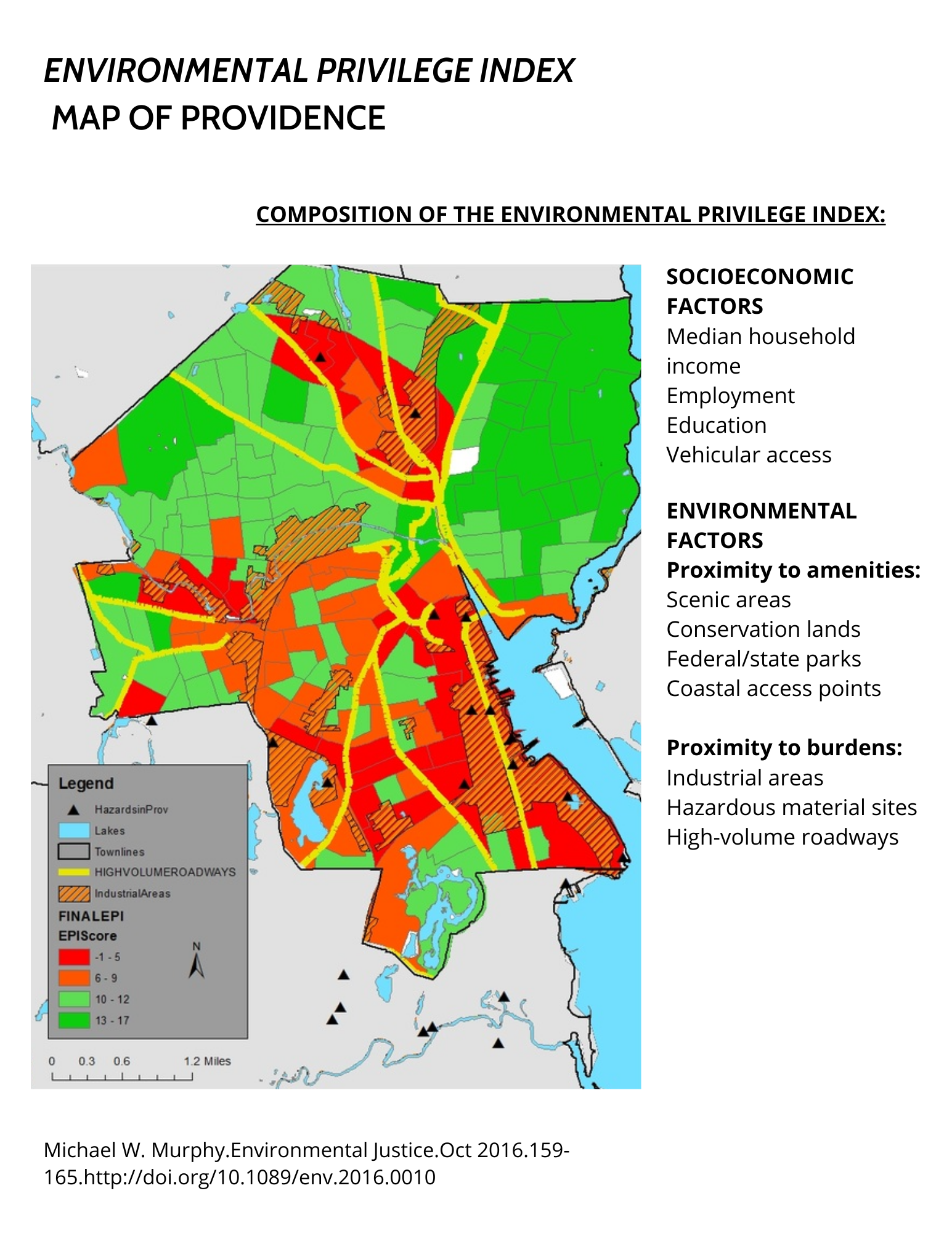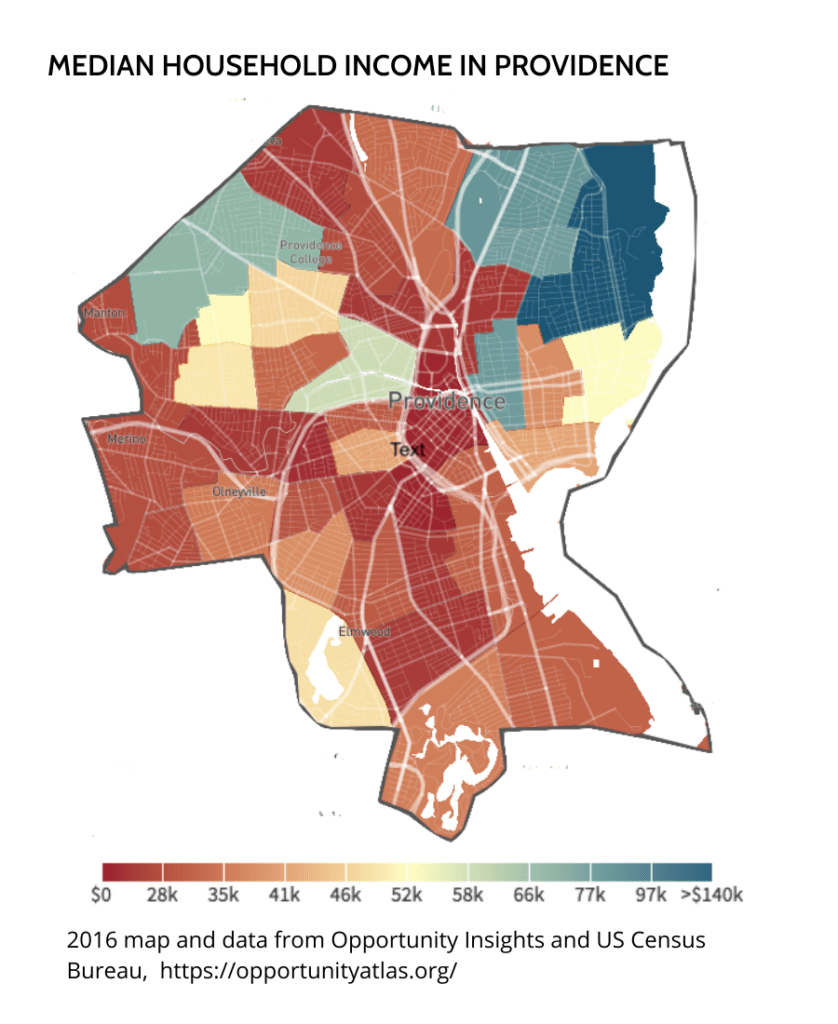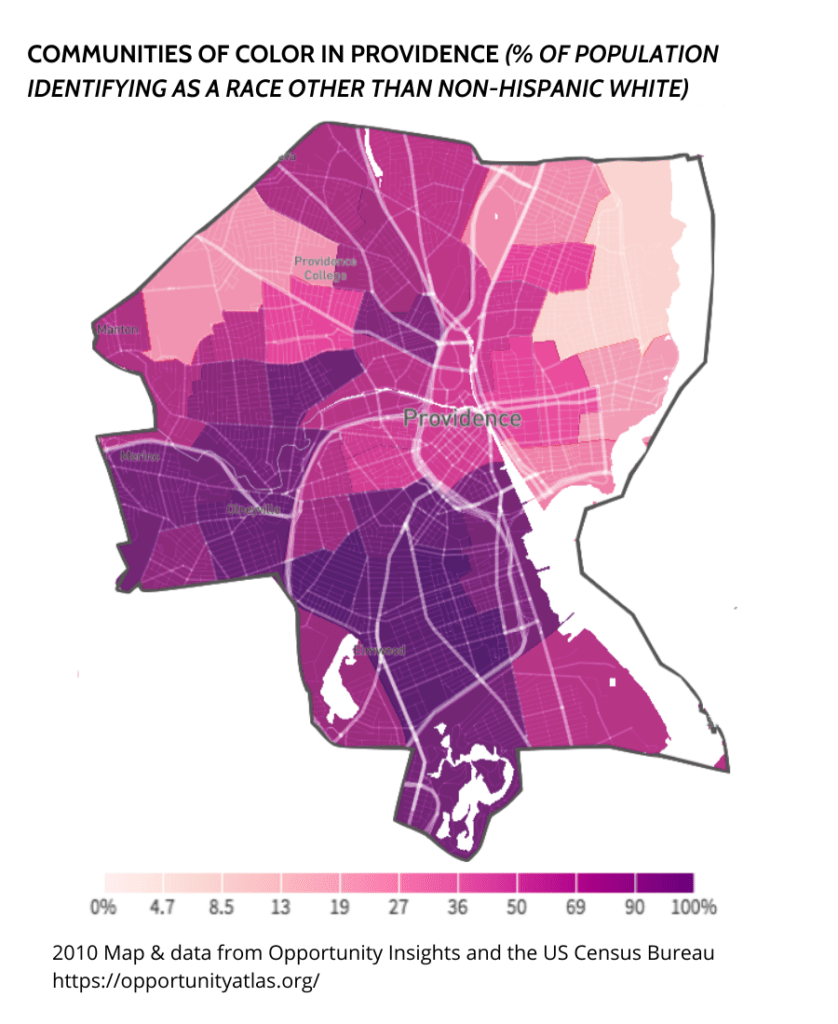In general we see that the areas of our city with the fewest trees also have the lowest income levels, highest proportion of communities of color and immigrant populations, the highest levels of climate-related impacts (such as Urban Heat Island Effect and localized flooding vulnerability) and the highest incidences of asthma and other environmentally-determined health conditions.
There are many complex reasons why tree canopy increases and decreases in different parts of cities over time: historic urban planning decisions and policies, development pressure, rates of homeownership, inequitable private and public investment in the installation and maintenance of green spaces and trees, urban density and available plantable area, social and cultural practices, etc. Overall however, we know that tree inequity is a product and a reflection of the broader patterns and underlying structures of environmental injustice and systemic racism. We also know that addressing and correcting the inequities in tree canopy will require thoughtful and intentional tailoring of programs, policies, practices and resources, which address the needs and priorities of our lowest-canopy neighborhoods, and the frontline communities who are living and working in them.
Taking up this challenge to create an equitable and thriving urban forest is one of the driving motivations for creating the PVD Tree Plan, an unfolding initiative that PNPP and the City’s Forestry Division are helping to spearhead, in collaboration with many partners and stakeholders across Providence. Read more about the PVD Tree Plan HERE!
